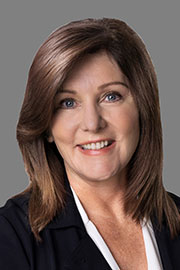- Jun/6/24 2:20:00 p.m.
I recognize the member from Hamilton West–Ancaster–Dundas.
- Hear!
- Rabble!
- Jun/6/24 2:20:00 p.m.
I share my colleague’s complete disgust that we will not be sitting for 19 weeks.
There are so many things that have been described that people are facing: housing issues; homelessness; no family doctors; long, long emergency waits.
I particularly want to say that people also won’t have their voices heard in this House because we are ending this so early—petitions like the ones that I have here, that were signed by almost 1,000 people in six days, who are very upset with the suspension of programs at Fleming College, including programs that address environmental studies. That’s something this government could use—some lessons on environmental studies. We currently have a climate emergency, and this is a government with absolutely no climate plan. So that would have been a good petition for the government to have been able to hear.
I also would have been able to talk about the folks in Dresden who have a petition. They are concerned about the potential damaging impacts to Sydenham River by the Dresden landfill. You should have heard about that.
Finally, I have to say I’m absolutely horrified that in my riding there’s a for-profit blood plasma clinic setting up shop. They will pay for blood plasma, and they’re allowed to sell it internationally. The concern is that this is a company that’s going to prey on people who are already vulnerable, who already need income and would be prepared to sell their blood products for profit. That is a shame, and that’s something that this government should stay and hear about.
What I want to focus on is a very shocking report that has just been published, and it comes from the University of Toronto’s Investigative Journalism Bureau. This concerns our children in schools. We’ve already been hearing about how underfunded our schools are and the conditions that our kids are going to school in. We have the absolute tragedy of Landyn dying in an isolation room in a school because there were no resources, no staff there to support. That’s on this government.
This report from the University of Toronto’s Investigative Journalism Bureau is showing that toxic lead in Ontario schools is a significant and serious health risk. In fact, in the past four years, nearly half of the province’s schools have had at least one test for toxic lead fail. That lead-laced water has impacted more than 800,000 students and roughly 2,300 elementary and high schools all across the province. Our children are going to school and if they drink the water, they are drinking lead, and I am sure that the government is aware of this, because we know that the schools have an infrastructure backlog of billions. But the very fact that this government knows that our children could be exposed to lead and they continue to underfund infrastructure and upgrades is completely shameful. We should be here over the course of the summer and into the fall to talk about the findings of this report and to come up with plans to address these shocking findings, to come up with plans that will put the minds of parents ease who know that their kids are going to school in classrooms where the water is toxic because of lead.
And finally, it’s shocking to see that this study will impact not only just schools, but it also impacts daycares. In a really shocking example, the Assikinack childcare centre in Barrie—the Minister of the Environment’s own riding—had among the highest rates of troubling tests among daycares. So daycares are failing these tests: 12 out of 16 tests in these daycares in Barrie failed. Another shocking example is Fort Frances, a high school in northwestern Ontario. The number of tests they failed there is a shocking example of how this government continues to underfund. We already know that First Nations across Canada have an infrastructure deficit in the billions. This is an example of how it impacts them and where we see it.
The minister was emailed a statement or was asked to respond to this—that’s the Ontario Ministry of the Environment. She didn’t respond to questions about the province’s decision not to adopt the federal safety guidelines for lead. Why are they allowing the lower lead limits? And what did the minister say? Rather than responding—
Interjections.
- Hear!
- Rabble!

- Jun/6/24 2:20:00 p.m.
The ayes are 60; the nays are 25.
- Hear!
- Rabble!
- Jun/6/24 2:20:00 p.m.
In the couple of minutes I have left, I’ve got to be honest, I am shocked that the government is doing this. They claim to be the people to represent the people who are in Tim Hortons. I’m sure that the people in Tim Hortons are going to be quite disappointed when you say, “Yeah, yeah, we decided that we would just take a few more weeks off, or a month and a half off.” And “it’s not really off,” they’ll say, “but we’re working hard.”
It’s actually—I’ve heard the words “travesty to democracy.” Why is it a travesty? This government is afraid of questions to transparency. They’re just trying to avoid question period. But if you really think it through, it has a bit of a silver lining, because this government, some of their legislation is so terrible they’ve had to rescind six major pieces of legislation. This government is so terrible, perhaps six weeks less of them is a good thing. The fact is, all they’re trying to do is avoid questions and avoid scrutiny.
One of the questions that hasn’t been asked, and somebody could maybe give me the timeline: What is coming back first, beer to corner stores or the Ford government? Because they really seem to be concerned about that.
We’ve got emergency rooms closing across the province, yet the government says, “Oh, health care is great.” But when people go to emergency rooms, they’re closed. People looking for doctors—less and less people have doctors. It’s not getting better, it’s getting worse, and the government’s solution is, let’s stop—
- Hear!
- Rabble!
- Jun/6/24 2:20:00 p.m.
Speaker, if you seek it, I think you will find unanimous consent to see the clock at 6.
- Hear!
- Rabble!
- Jun/6/24 2:20:00 p.m.
It is an honour to rise today on this last day of our spring session for second reading of Bill 133, An Act to proclaim the month of September as Kids’ Online Safety and Privacy Month. If passed, the act would help raise awareness and provide opportunities to discuss the dangers that children face online, including cyberbullying, online grooming, sexual exploitation and, yes, human trafficking.
Between 2018 and 2022, online sexual luring of children escalated by 815%. That’s just in a five-year period. Imagine that. Statistics Canada also reported that the rate of child pornography increased by 290% between 2014 and 2022, with underage girls being overrepresented.
The addictive qualities of the Internet and digital technology also pose a risk to kids’ mental health. It is our responsibility as parents, educators, legislators and members of the wider community to protect children in a growing online environment. By declaring September as Kids’ Online Safety and Privacy Month, we can use that opportunity to equip children with the tools to protect themselves from the dangers of the Internet, and we can highlight the importance of digital supervision, education and responsibility.
While I’ve always been interested in the matter, at least since having kids, I want to recognize that this bill was inspired by Dr. Charlene Doak-Gebauer, founder of the charity called Internet Sense First and producer of the documentary Vulnerable Innocence. I encourage everybody here and everybody abroad to view this documentary for your own education. When I viewed the documentary myself, I was right away convinced that it was very much worth my time and effort to bring this issue to the Legislature.
Vulnerable Innocence features valuable information from experts and provides solutions to online safety for parents, professionals and caregivers. Dr. Doak-Gebauer’s advocacy emphasizes the lead for digital supervision because leaving our children unmonitored as they use the Internet only increases their risk of exploitation.
But I have to admit that when I finally gave in to each of my four kids to have a cellphone, as a parent myself, I was nervous about what they would access, and also, I didn’t know how to properly monitor them. After watching the documentary, I was encouraged to see that there was hope for parents to be more confident as to how to guide their kids.
The best place to start to educate children and youth and raise awareness on the warning signs is in our schools. That’s why September is the best time to declare Kids’ Online Safety and Privacy Month, because it coincides with the beginning of the school year. Through proper education initiatives, kids can themselves take preventative measures to limit their risk of harmful exposure on the Internet. Establishing support networks and resources during this month can lead to sustainable practices on Internet safety that extend beyond September, providing tools for children and youth for life that they can, in turn, use to teach their own kids.
Protecting children online also requires a collective effort from parents, educators, legislators and the community. It is our responsibility as a community to ensure that kids can navigate the Internet safely and confidently.
We need to be proactive in how we deal with the safety of our children online. We must educate ourselves and supervise our children’s use of digital technology. Parents need to be aware of their roles and responsibilities in supervising their children’s online activities. With this bill, the month of September would focus on encouraging parents, guardians, educators, legislators and the community to take steps to keep children safe.
The government is taking some steps to better protect the privacy of children online through their Bill 194 on cyber security, and I believe that Bill 133 is actually an excellent complement to the government’s work.
Bill 194 recognizes the need to monitor children and youth’s use of digital technology. During his debate on the bill, the Minister of Education said himself that parents “want government to strengthen the regime that protects kids online and in class from the harms—the constant, rising harms online—that can manifest in bullying, in trafficking and in self-harm.” What better way to achieve this than to dedicate one month a year to ensuring parents and children are aware of the dangers of online activity and know how to avoid them?
Bill 194 would also set the groundwork for a strong regulatory framework regarding artificial intelligence, and I want to thank the government for taking those steps. AI has brought about a whole host of new challenges and dangers online, and we need to be proactive in shielding our kids. For example, there have been many cases in recent years of AI being used to generate nude photos of children and those photos being circulated among their peers, and that’s a reality. Such a situation is absolutely devastating for a child and can have serious repercussions on their mental health. Many kids and parents also do not understand the legal and liability issues associated with producing such content. That’s why these conversations need to happen. Educating our kids on the dangers that AI presents and the ways to decipher what is real and what is not is an essential component of protecting your kids, and Bill 133 would help to do that.
A lot of human trafficking also begins online. Traffickers often use social media to recruit their victims, making children and youth particularly vulnerable. Sadly, the average age of recruitment into sex trafficking in Canada is only 13 years old.
Last year, the Legislature joined together to unanimously pass Bill 41, Protection from Coerced Debts Incurred in relation to Human Trafficking Act, which will help provide survivors of human trafficking with the financial freedom they need to rebuild their lives. While that was an important step to better supporting survivors, we must do more to prevent human trafficking from occurring in the first place. Bill 133 will help to do that by providing opportunities to educate parents and children about the common tactics that traffickers use online to recruit their victims and how to recognize them so children can avoid falling into those traps.
I hope all members in this House will support this legislation because I firmly believe that awareness and education are essential to addressing the issue of online safety for kids. But I also know that without action this bill will simply remain words on a page. As a result, I strongly encourage each of you to think of ways on how to improve digital supervision in your own communities.
I also urge the Minister of Education to use this legislation as a first step toward implementing real programs in our schools to educate kids about their online world, the dangers that exist and how to avoid them. It is these actions that will make this legislation come to life and have a real impact on improving the online safety of our kids.
It is the responsibility of parents, educators and the government to protect vulnerable populations, including children, from the unique risks posed by the digital age.
By proclaiming September as Kids’ Online Safety and Privacy Month, we can together help to reduce instances of online harm through education and awareness and help kids in Ontario stay safe.
- Hear!
- Rabble!
- Jun/6/24 3:10:00 p.m.
I recognize the member from Burlington.
- Hear!
- Rabble!
- Jun/6/24 3:10:00 p.m.
It’s a pleasure for me to stand in this chamber and voice my support for Bill 133, An Act to proclaim the month of September as Kids’ Online Safety and Privacy Month.
This legislation, of course, was introduced by my colleague the member for Ottawa–Vanier. While she and I may have our differences of opinion on many of the issues that come up for debate, I applaud her for taking action to keep kids safe from cyberbullying, online grooming and other dangers that they might encounter on the Internet.
There is nothing more important for our party and our government than the safety of Ontario’s children. I am proud to support Bill 133 because I believe it complements the many actions we’ve taken to protect Ontario’s children and youth.
In April, we announced that Ontario is explicitly banning vaping devices from schools and school-related settings along with nicotine and tobacco products. We took this action because the rate of vaping among students in grades 7 to 9 has increased in recent years, and the incidence of vaping among Canadian youth ranks among some of the highest in the world. Under our new policy, students found possessing vape products, as well as tobacco and nicotine will be asked to surrender them, and schools will notify their parents.
During that same announcement, we also announced that our government is taking action to heavily restrict the use of mobile devices, including cellphones, smart watches, tablets and laptops by students. Through changes that will come into effect this fall, students in grades 7 and up will be required to turn off their mobile devices or set them to silent mode and keep them out of view when they’re in the classroom.
For students in kindergarten to grade 6, we’re banning cellphones for the full instructional day. Devices must be turned off or set to silent and stored out of view for the duration of the school day. If a student doesn’t put away their phone, the teacher will ask them to place it in a storage area in the classroom for the duration of the lesson.
Additionally, the province is requiring all publicly funded school boards to restrict access to social media on school networks and school devices. Our decision to tighten the rules around students caught using cellphones during class time was primarily about removing distractions from learning, but it was also about protecting the mental health and physical health of Ontario’s students. Experts tell us that excessive cellphone and mobile device use have a negative impact on student mental health and well-being. Excessive cellphone and social media use can lead to depression and anxiety, and it puts children at risk of online abuse, cyberbullying and invasion of privacy.
As a mother and as an advocate for mental health, I believe the actions we have taken thus far will make a positive difference, but we’re not stopping there. Our government will continue to consult with law enforcement officials as well as social media and tech experts on ways to further crack down on cybercrimes and cyberbullying, and develop age-appropriate Web materials and workarounds on software exploits in schools.
Just recently, this chamber did a second reading debate for Bill 194. Should it pass, that legislation will provide new tools to prevent and respond to cyber security threats and safeguard critical public services, including the public education system.
Our government is serious about cyber security, and we believe that students deserve a school environment that is supportive and safe from distractions and peer pressures, where they can focus on learning.
Bill 133 can play a key role in helping our government to keep Ontario’s children safe, so once again, I’m proud to offer my full support for its passage.
- Hear!
- Rabble!
- Jun/6/24 3:20:00 p.m.
It’s an honour to rise today, on the day that the Legislature is going to be recessing, to debate declaring September as Kids’ Online Safety and Privacy Month, and I want to thank the member from Ottawa–Vanier for bringing this bill forward. In the NDP, we’re very supportive of this. I think it will start a conversation, and it’s an opportunity to educate parents, children, educators, government officials and concerned citizens about the potential harms that are happening when children are online.
Before becoming an MPP, at one point I was a researcher. Some of my research was on gambling. One of the things that I learned about gambling is that slot machines have an algorithm, and the algorithm is designed to pay out a certain amount. It’s usually set at 80%, for example. So if you go in and you gamble $100 and your luck is totally even—it never would be—you would win $80. And then if you gamble that $80, you would win 80% of that, which is $64. And if you gamble the $64, you would win 80%, which is $48. So by the time you’ve gambled $500, you’ve won $400 and you’ve lost $100, and the $100 that you lost is the $100 that you walked in with, so you’ve come out broke, but you’ve gambled so many times. The lemons and the cherries and everything that keep coming up on the slot machines have nothing to do with the algorithm. The algorithm is just a very simple mathematical function. You could say, “I’m going to play this for an hour. I’m going to punch it 150 times an hour. What is the outcome going to be? Where will I be?” Your calculator or your phone or whatever device you’re using would be able to calculate that in a fraction of a second.
What those cherries and lemons and anchors and all those things are designed to do is—they design them, they show them in a way that makes you think that it’s going to pay out soon. It creates addictive—and it’s called engagement loops. So the idea of the slot machine—it’s designed to make players lose track of time so that they keep playing.
In social media, the scrolling is an engagement loop. The scrolling of apps is actually addictive for young people—for all of us, but for young people, in particular.
New York Times reporter Max Fisher wrote in a book called The Chaos Machine—and this is what it does. They say that slot machines are the heroin of gambling. It’s highly addictive because it gives you a dopamine response. Max Fisher wrote, “Dopamine creates a positive association with whatever behaviours prompted its release, training you to repeat them.... When that dopamine reward system gets hijacked, it can compel you to repeat self-destructive behaviours. To place one more bet, binge on alcohol—or spend hours on apps even when they make you unhappy.” And it’s not just those notifications that make them addictive; in apps, it’s the positive affirmation—it’s the likes; it’s the followers; it’s the updates from friends; it’s the photos of family and friends. That’s what makes social media apps, in particular, addictive.
The designer of some of these apps, Aza Raskin, who designed, actually, the infinite scroll in 2006—he was also an employee with Mozilla and Jawbone—said, “It’s as if they’re taking behavioural cocaine and just sprinkling it all over your interface and that’s the thing that keeps you ... coming back and back and back.” He said that many designers were driven to create addictive app features by the business models of the big companies that employed them.
“‘In order to get the next round of funding, in order to get your stock price up, the amount of time that people spend on your app has to go up’....
“‘So, when you put that much pressure ... you’re going to start trying to invent new ways of getting people ... hooked.’”
And that’s what’s happening to our children online. Social media is rewiring their brains. There was a study of university students who used social media for more than three hours each day, and those who did suffered from poor sleep, poor academic performance, much higher rates of depression, substance abuse, stress and suicide.
And the effect is even greater on younger people. Among those ages 10 to 19, that’s when your brain is in a fast development stage. You’re developing your sense of self-worth, and social media, the more you’re on social media, the more negative impact it has on your learning, on your behaviour, on your impulse control, on your emotional regulation.
More often, people who are on social media, young people who are on social media more have a negative body image, and 61% of Canadians aged 12 to 17 engage in social media several times a day, so we’ve got to be careful about what’s happening.
And the MRI scans—like when I said they’re rewiring their brains—MRI scans on teenagers showed that the reward centres in their brains lit up with increased blood flow when they were on social media.
And this is having a real impact on our schools. I spoke with some directors of education, with educators, and they said that kids are acting out. They’re getting up in the middle of class. There’s increased violence in schools. The elementary teachers have reported that violent incidents have increased by 72%, and the vast majority, 80% of teachers and staff members in schools, report that violence incidents have increased since they started working in public education.
So, the school boards in Ontario, several of them, have launched a lawsuit, and they’re against the social media companies, because they’re looking for money to pay for the supports that students need in order to overcome this. So it’s seven different school boards as well as two private schools that have joined this lawsuit.
And these school boards, their first concern, their primary concern is children’s mental health. When this lawsuit was announced, the Premier was asked, “Well, what do you think of this?” And his response, immediately—without investigating this, without even looking into it, without even looking into it, his immediate response was “Nonsense.” He criticized the school boards for standing up and taking the social media apps to court for the negative mental health impacts that they’re having on our children.
The government did come back, and as the government member just mentioned, they decided to ban cellphones in schools, or to make students shut off their cellphones while they’re in schools. And I was thinking about this. I’m thinking, yes, that’s probably a good thing, because it will reduce the amount of time that children are online, especially because it can be very distracting to have them in schools, but it really doesn’t get at the root of the problem.
And the root of the problem is that we need to find ways for children to be safe online, including using social media apps, and we need to look at the design of those social media apps and how they can be redesigned so that they’re not having a negative mental health impact on children.
When I’m talking about mental health impacts, that’s just one aspect, and as my colleagues have mentioned in here, there are also privacy issues. What happens to children’s data when these companies have it? Who owns it? How is it being sold? What algorithms are being developed to target them for advertising? This is something that we need to look at as legislators. I know the House is rising today, but this is what we should be looking at. We should be developing legislation to protect children from online harms. It goes to sexual exploitation, to deepfakes, artificial intelligence deepfakes.
I was a trustee before this, and there was a girl who had sent her boyfriend a picture of herself, and that went all through the school. It was intended just for him, and it went all through the school. She was just devastated by this. Her family was devastated by this. And this is just one incident. I say this—I know this has happened thousands of times across this province.
The member is bringing up this bill today to create online safety awareness month in September. It’s a good step. We need to do much more, because the other thing that happens online is sexual grooming.
The police have reported that there’s an increase in child sexual exploitation in Canada. In 2014, there were 50 incidents for 100,000 children; by 2022, it was 160 incidents for 100,000 children. For seven in 10 victims identified in online sexual offences against children, the victims were aged, for girls, 12 to 17, and 13% were girls under 12; and among boys, those aged 12 to 17 were 11% of the victims and 3% of those were under 12. We need to protect our children from this when they’re online.
The other thing that happens online, the other really damaging thing, is self-harm. There are violent online groups who are pressuring youth into harming themselves. This is from a CBC article this year: A 15-year-old girl carved the numbers “764” into her chest and then tried to kill herself. The RCMP said it is aware that there is an online group referred to as 764. As well as targeting minor victims internationally, it is connected to violent extremist groups. The father of that girl said in The Fifth Estate he discovered images of self-harm and disturbing messages between his daughter and a self-proclaimed member of 764 on a site called Discord.
We need to look at this. We need to make sure that this is not repeating itself. We need to cast light on the harms that are coming to our children online.
I’ve got a minute left, so I’ll talk about some of the policy recommendations that have come up and the research. They say you need to strengthen standards for age verification within social media apps, so that there aren’t children 12 who are pretending to be older on social media and becoming vulnerable.
The government needs to fund research on the impacts of social media on children and youth and well-being, and the results have to be transparent. They have to be made public.
They need to develop regulations for tech data collected on children and on the algorithms that are used to target them for advertising. We need to restrict harmful advertising from being directed at children and youth. This includes gambling, vaping, alcohol and unhealthy food.
The Canadian Paediatric Society also recommends that we need media and digital literacy training for students as part of the curriculum.
I welcome this legislation. I want to thank the member from Ottawa–Vanier for bringing it forward, and I look forward to using September as an opportunity for all of us to work toward educating parents, students, educators, government members and the general public about the potential harms and how to protect our children online.
- Hear!
- Rabble!
- Jun/6/24 3:20:00 p.m.
Further debate?
- Hear!
- Rabble!
- Jun/6/24 3:30:00 p.m.
As a strong believer in parliamentary democracy, it’s an honour for me to stand before you and my colleagues to express my support for Bill 133, An Act to proclaim the month of September as Kids’ Online Safety and Privacy Month. I also wish to sincerely thank the member for Ottawa–Vanier for putting forth this legislation.
I agree that we need to raise awareness about online safety and privacy for children, and that kids need to be aware of the risks online and how to protect themselves. It’s always encouraging when we, as parliamentarians, can put aside the party labels and work together for a worthwhile common goal: in this case, the safety of children.
Speaker, my colleagues and I in the PC caucus are pleased to support Bill 133 because we believe it will complement the many actions we have taken to ensure Ontario’s schools are safe and supportive learning centres for children and youth. Most recently, our government announced that we are strengthening the rules around cellphone use during class time, and students who are caught with vaping, cannabis or nicotine products in school. We are also ordering school boards to remove social media websites from all school networks and devices. We made this announcement to remove unnecessary distractions from the classroom and, of course, to safeguard the mental and physical health of our students. Excessive cellphone and social media usage can have a negative impact on students’ mental health, and there’s no question that children are at much greater risk of harms posed by digital platforms than ever.
Our government understands that positive mental health is critically important to students’ achievements and overall well-being. For that reason, we are investing $117.65 million in student mental health supports for the coming school year. Just to put things into perspective, that’s an increase of 577% since the 2017-18 school year, when the previous Liberal government was still in charge. And since 2020, our government has opened 22 youth wellness hubs that provide mental health supports to over 31 communities, and we have plans to open another five hubs.
We made the vaping and cellphones announcement in April, but I want to remind this House that our government has made many, many other announcements in recent years that have helped to keep kids safe. For example, our government brought greater safety to our classrooms by introducing a no-tolerance policy that means that teachers who have serious criminal convictions and charges against them are not allowed in front of the classroom. We are now publicly posting the names of educators who are convicted of serious criminal offences. We took these actions, Speaker, because we believe in putting families, and the rights of parents, first.
Many parents would say that bullying is a serious problem in our schools and it poses a threat to the mental and physical health and well-being of children. I’m proud to say that our government has taken action. Nearly three years ago, we issued Policy/Program Memorandum 144, which provides direction to school boards regarding bullying prevention and intervention in schools. Every school board must establish a comprehensive and achievable plan to deal with bullying and all schools within that board must implement the plan.
There’s no question, Speaker, that based upon the actions that we have taken, our government is very serious about keeping children safe, so I call upon my colleagues to vote in favour of Bill 133. Let’s make September our province’s Kids’ Online Safety and Privacy Month.
- Hear!
- Rabble!
- Jun/6/24 3:30:00 p.m.
Further debate?
- Hear!
- Rabble!
- Jun/6/24 3:30:00 p.m.
Thank you to the member from Ottawa–Vanier for bringing this forward. As a school social worker for 11 years, this is such an important topic that I’ve been pushing forward with throughout my career. I’ve seen the billions and billions of dollars that companies profit every year and the negative, harmful impact it has on kids.
Today we honour the memory of the Afzaal family. We know that that young man was radicalized online through these very algorithms that we talk about. In the fall of last year, on the campus of the University of Waterloo, a young man was radicalized and acted out a hate crime against people studying gender and sexuality.
The violence that we see in schools—kids are playing more and more graphic violent games online. We’ve seen attention spans shrink from about 15 minutes to less than seven, so teachers are trying to tap-dance to get people’s attention. It’s undermining the very education system that we are investing in.
It’s affecting kids’ eyes. They have “old kid eyes,” where they’re getting glasses at an earlier age because they’re watching hours and hours of screens online.
In my school board, we did a survey and found that 30% of students were getting a good night’s sleep. So not only do we have to worry about safety and privacy; it’s affecting the very development and health and well-being of young people, because they are not having a good night’s sleep. Every family that I would visit, the first thing I would ask is, “Where is your cellphone? Let’s talk about how you use it.” Because I know it’s under their pillow every night. It beeps, it blops, it bloops and they’re waking up throughout the night and not able to study and focus and get up for school in the morning. We haven’t even discussed attendance issues. If you talk to anybody in the education system right now, the wheels are falling off. Kids are not showing up. So, yes, we could have the bells and whistles when they get there, but if they’re not there to begin with because they didn’t have a good night’s sleep, we’re no further ahead.
I am going to spend my time focusing on pornography. This is something that is happening in our midst and we do not know the realities that are faced, and I’m alarmed at what’s happening in our society. When COVID-19 came into action, our school board had a monitoring system so we could catch if kids had made a threat to someone else, a threat to their own life, or were watching eight times or more of pornography. Guess what the number one referral I had from then on? I didn’t have these referrals before. They started when we started paying attention to what kids were logging on to in elementary schools on school board things. And we could block the heck out of these, but those are the referrals that we were getting and I was having to call principals, parents and teachers to talk to students about excessive pornography use by very young kids.
We know now that kids are watching pornography before they have even had their first kiss, before they’ve had their first sexual encounter. Some 48% of 13-year-olds have seen porn; 35% of the scenes in popular pornography contain non-consensual behaviour. So more than a third of the porn that these young under-13 kids are watching involve non-consensual behaviour.
Did you know that choking is a norm? This is not the pornography any of us have ever considered in our lifetime. Choking is a norm. At my local hospital, our sexual assault support people are getting specialized training to understand the negative impacts of choking. Kids, instead of getting accused of attempted rape, are now getting accused of attempted murder. These are young boys.
Did you know the most dangerous category are boys under 12? Why? Because we have not armed them with the understanding and information they need to have about consensual sexual activity. So we need to go much further, and I know this education is not happening in schools.
I worked my tail off to get digital citizenship content, which is widely available—it’s practically free—into every school at every developmental stage. Adults, if they do know—which is rare—have no idea how to respond, whether it be staff in schools or caregivers themselves. We have not armed them.
When I look, as a social worker, to refer a student who has consumed violent, misogynistic hate, here we are, working so hard to eradicate interpersonal violence, but we have so much indoctrination happening in our midst and we are unaware and we have not done enough to curb it.
And if you look in society for those not-for-profit, widely accessible, free services, I tell you, they do not exist. In Burlington, as the member from Burlington should know, this month, the very sexual offending clinical support with the experts that train all of us was shut down. In Hamilton, Kitchener and London, the program that supports young offenders to stop reoffending was shut down.
So we are unprepared and we need to do better to help our kids have healthy relationships.
- Hear!
- Rabble!
- Jun/6/24 3:40:00 p.m.
I want to thank the members for Burlington, Spadina–Fort York, Markham–Unionville, Kitchener South–Hespeler and Kitchener Centre for your words of support and for your passion on this issue. I’m really grateful, and, frankly, it lifts my spirits to see that we are all willing to work together to help protect our kids.
I also want to thank Dr. Charlene Doak-Gebauer—she’s here in the Legislature—for reaching out to me, but especially for all the work that she has done and that she continues to do on this important issue.
If the bill passes today, as I hope it will, it will be the beginning of some meaningful changes to help protect our kids, and it would be a beautiful and positive way to end our session.
I want to end by also thanking my staff, including my staff watching from Ottawa and my OLIP intern, for all the help to get to this point today.
Lastly, I want to thank my caucus colleagues for always being so supportive—and really, to all MPPs supporting this bill.
- Hear!
- Rabble!
- Jun/6/24 3:40:00 p.m.
I enjoy it when we have a bill that comes before the House that has unanimous support, because it really shows just how much concern that the members of this House have. I was happy to hear the member from Kitchener Centre speak when she spoke on my motion about cellphones and vaping and referenced the prevalence of pornography in schools. I can tell by the passion of her language that when you have really seen this happen, you feel particularly motivated to fix it. I was motivated myself with my own motion.
But one of the things that has really stuck in my mind about my previous job was reading through cellphone and computer dumps in drug trafficking and human trafficking cases. One of the most common ways that human traffickers—particularly for sex trafficking—recruit their victims is through what they call the “Romeo” or the “boyfriend” tactic, which is when an individual uses a younger girl, usually somebody who is lacking in self-confidence, doesn’t have a lot of support, is vulnerable, and basically makes her believe that he loves her, and all of a sudden starts asking her to do favours for him.
I will tell you that, having read through countless numbers of those conversations and seeing the text messages back and forth and the photos back and forth, there is very little that is as heartbreaking as that, as watching someone be targeted, particularly when you would see—I remember an occasion where I was reading through, and it was a trafficker who had multiple girls and was actively trying to recruit more. I think it was Facebook Messenger he was using; I can’t remember. But basically, he would just be going through friends and contact lists and sending out the same message to different girls over and over and over again, until someone would respond to him. He had a script that he would follow, and you would see these girls who, frankly, because of all the other things that we throw particularly at young girls, from pornography to body image issues to bullying—whose self-confidence is already at a low. And when some seemingly wonderful boy came along and told her that she was pretty and he told her that he wanted to spend time with her and that she was special—frankly, it is absolutely terrifying to see just how little it takes to recruit a girl. After a few exchanges, he would have her meeting with him, force her to take pictures in lingerie, put her on Backpage—multiple men in an evening.
I really appreciate this, because making sure that parents are aware of this is huge. It’s not just about giving kids the tools to spot this, but also parents. From what I saw, it was a pattern of behaviour that was the same over and over again. I would have been able to go in and tell a classroom, “This is literally the type of messages you will get.” Kids need to know that. Parents need to know that, so they can ask their kids. So I’m delighted to support this, and I certainly look forward to consulting more on how we can make this real and practical in schools.
- Hear!
- Rabble!
- Jun/6/24 3:40:00 p.m.
Further debate.
The member has two minutes to reply.
Madame Collard has moved second reading of Bill 133, An Act to proclaim the month of September as Kids’ Online Safety and Privacy Month.
Is it the pleasure of the House that the motion carry? I declare the motion carried.
Second reading agreed to.
All matters relating to private members’ public business having been completed, this House stands adjourned until 10:15 on Monday, October 21, 2024.
The House adjourned at 1549.
- Hear!
- Rabble!










